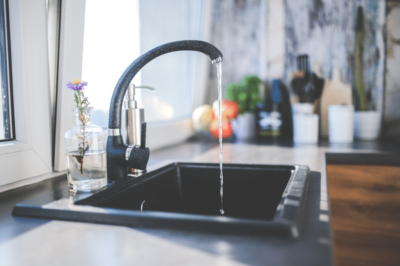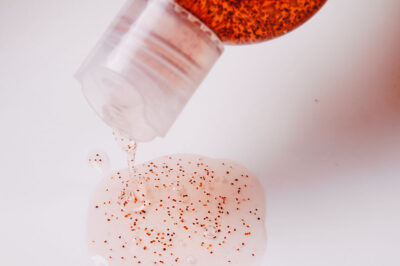Table of Contents[Hide][Show]
Nitrate, fluoride, TTHMs. These are only three of the dozens of water contaminants that can be found in our tap water. Some of them are present in almost all public water systems in our country. What can you do to protect yourself against them and where can you find more information about the quality of tap water in your home?
Where To Find Information About Your Water Contaminants
If you don’t want to send a direct sample of your tap water to an independent lab for a professional test, you have two possible options to find out more about what contaminants might be lurking in it:
Consumer Confidence Reports
With the Safe Drinking Water Act (SDWA), the US government wants to make sure that the general public has access to clean or at least safe drinking water. The federal law requires public water systems to provide their customers with what is called a “Consumer Confidence Report” (CCR). The free annual report has to list all regulated contaminants that were found in the water system the previous year and also their potential health effects. You can click here to search for your local CCR on the official website of the United States Environmental Protection Agency.
Water Contamination and the Best Way to Make Sure its Safe
How to Choose the Right Water Filter for Your Lifestyle
Bottled Water, Tap Water or Filters: Which one is the best?
EWG’s Tap Water Database
The Tap Water Database of the Environmental Working Group (EWG) offers a browsable compilation of about 28 million records of water contaminant data for almost 50,000 water utilities in all 50 US states. The database not only provides information on the contaminants that are currently regulated under the SDWA, but also on many unregulated organic and inorganic chemicals as well as heavy metals etc.
Please note: All numbers included in this article were extracted from the EWG Tap Water Database and date back to 2015.
1—Total Trihalomethanes (TTHMs)
Trihalomethanes (TTHMs) are disinfection byproducts, which means that they form in tap water when it’s treated with chlorine and other disinfectants. TTHMs include chloroform, bromodichloromethane, dibromochloromethane and bromoform and were found in water systems in all 50 US states served to a little more than 284 million people – in many cases above federal standards and way above recommended health guidelines.
TTHMs have shown to increase the risk of developing bladder cancer. The chemicals are also associated with causing problems during pregnancy.
How to remove TTHMs from water?
You don’t have to invest in an expensive filtration system to remove TTHMs from your tap water. Faucet mount filters which apply carbon filtration are already available for as little as $30 and are a great choice here.
2—Strontium
Strontium is a metal that was found in water served to 259,992,706 people. The bad news is that currently there doesn’t even exist a national drinking water standard for it. Strontium accumulates in bones over time, where it can cause damages if consumed in high dosages.
The health guideline for Strontium defined by the EPA under the “Unregulated Contaminant Monitoring Rule“-program is 1,500 ppb (parts per billion). As an example, the average level of Strontium found in water utilities in Kaukauna, WI were more than 14 times higher (22,113.4 ppb).
How to remove strontium from water?
Unfortunately, there is not much reliable data when it comes to strontium removal, specifically. Generally speaking, reverse osmosis filters have proven to be the most effective home water treatment systems and are capable of removing many other metals.
3—Haloacetic Acids (HAA5 or HAAs)
Water contaminated with haloacetic acids was served to almost 260 million people in 2015. 658,000 of them received water which showed to contain the disinfectants in concentrations above the legal limit. Health concerns associated with HAAs are increasing the risk for cancer and harming fetal growth and development.
How to remove HAAs from water?
Activated carbon filters seem to be most effective when it comes to the removal of HAAs, which includes reverse osmosis systems, faucet filters, countertop filters and even some pitcher and refrigerator filters.
5—Chromium (Hexavalent)
Our next most commonly found water contaminants are chromium (hexavalent), also referred to as Chromium-6. Again, there doesn’t exist a national drinking water standard for the substance.
Chromium-6 is a known carcinogen, which can also cause harm to your liver and reproductive system. The health guideline of 0.02 ppb were exceeded manifold in a number of public water systems, first and foremost in California and Arizona.
How to remove chromium-6 from water?
If you want to protect yourself against Chromium-6, the Environmental Working Group recommends to install a reverse osmosis system in your home or use a filter pitcher that has proven to be capable of removing the contaminant.
5—Nitrate
Nitrate is the first water contaminant on our list that was not found in all 50 US states, which means that if you live in Nebraska, you can count yourself lucky!
Nitrate enters our water systems mostly due to agricultural runoff. It is being used as a chemical fertilizer and can cause cancer and disturb fetal growth and child development when consumed in large amounts.
The bad news is that Nitrate is currently unregulated and different health guideline concentration levels are being exceeded every single day.
How to remove nitrate from water?
The best way to remove nitrate as well as nitrite is by means of a reverse osmosis filter system.
6—Vanadium
“Only” 211,193,930 fellow citizens were supplied with tap water contaminated with Vanadium between 2010 and 2015. The substances is also monitored under the Unregulated Contaminant Monitoring Rule program.
Toxic amounts of vanadium can lead to digestive problems, such as vomiting and stomach pain, liver damage, kidney failure and dysfunctional child development among other health risks.
How to remove vanadium from water?
Most activated carbon filters should be capable of removing vanadium at least to some extent. If your Consumer Confidence Report lists large amounts of vanadium in your water, you might want to explicitly ask a manufacturer about the effectiveness of vanadium removal of a certain filter model.
7—Fluoride
The last contaminant on our list is fluoride. Fluoride gets added to our tap water, because it’s an official policy of the United States Public Health Service with the goal to prevent tooth decay.
Water fluoridation is a very controversial topic. If you want to learn more about it, it’s probably best if you do your own research. The American Cancer Society has published an article called “Water Fluoridation and Cancer Risk”, which you can find here. Another interesting article about “Fluoride Exposure and Human Health Risks” was published by the International Academy of Oral Medicine and Toxicology.
How to remove fluoride from water?
If you’ve decided to remove fluoride from your tap water, reverse osmosis systems have shown to do the best job.
Conclusion
Unfortunately, the majority of us in the US receive tap water that consistently contains at least a small number of potentially harmful contaminants. The good news? You can protect yourself against them with appropriate measures. By initially figuring out what specific undesired substances are in your water, you can then find a suitable filtration system tailored to your needs.





